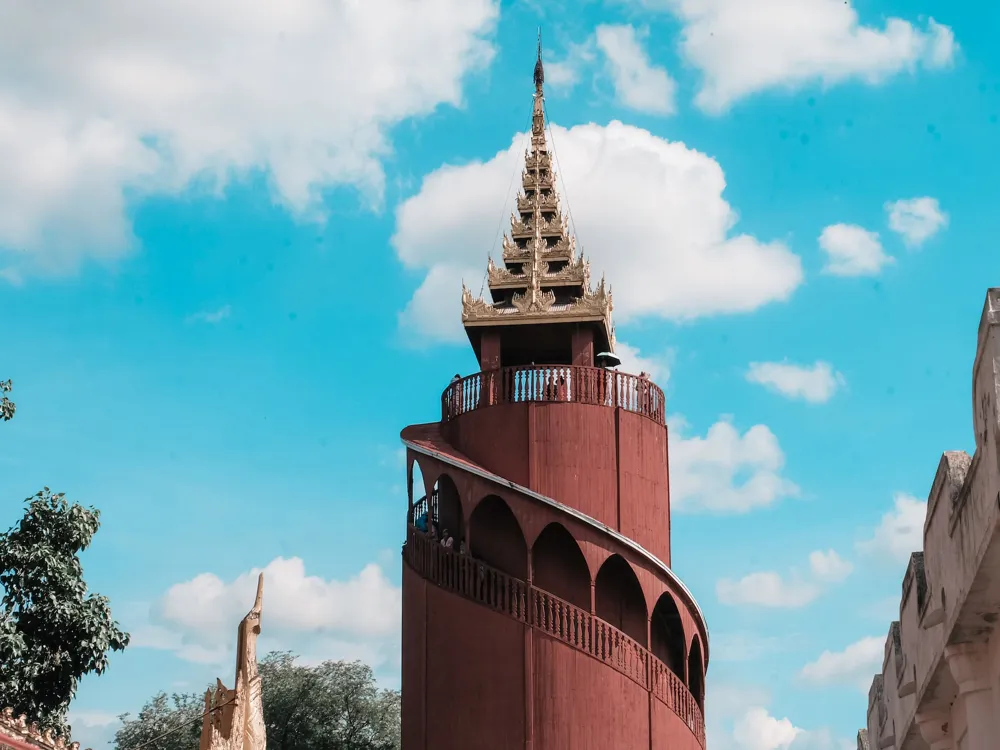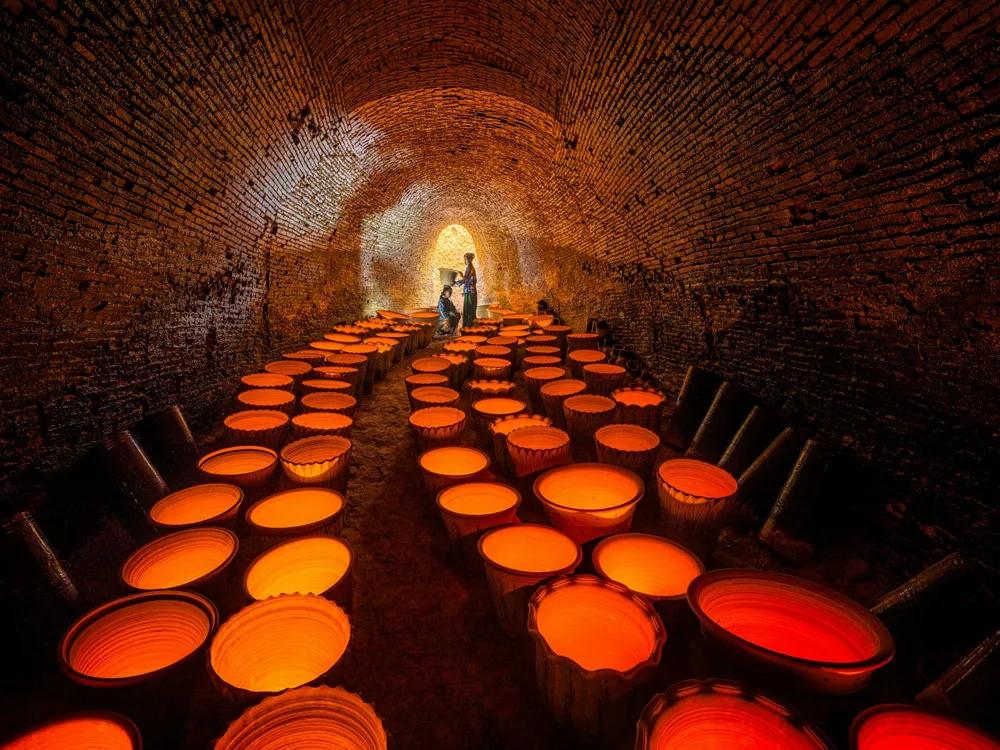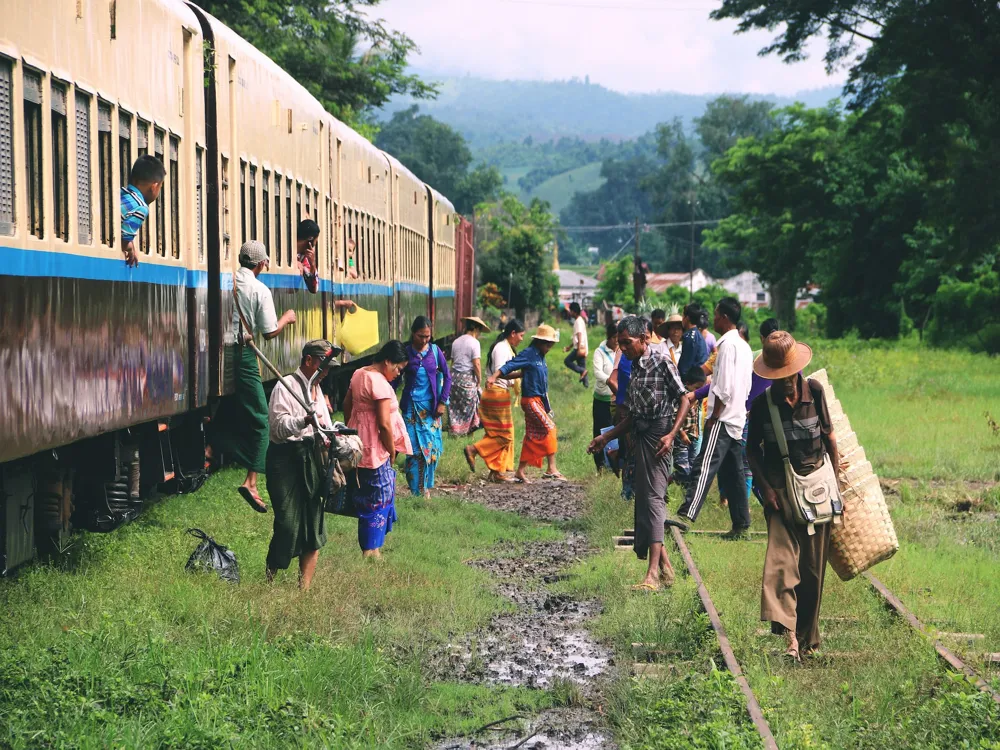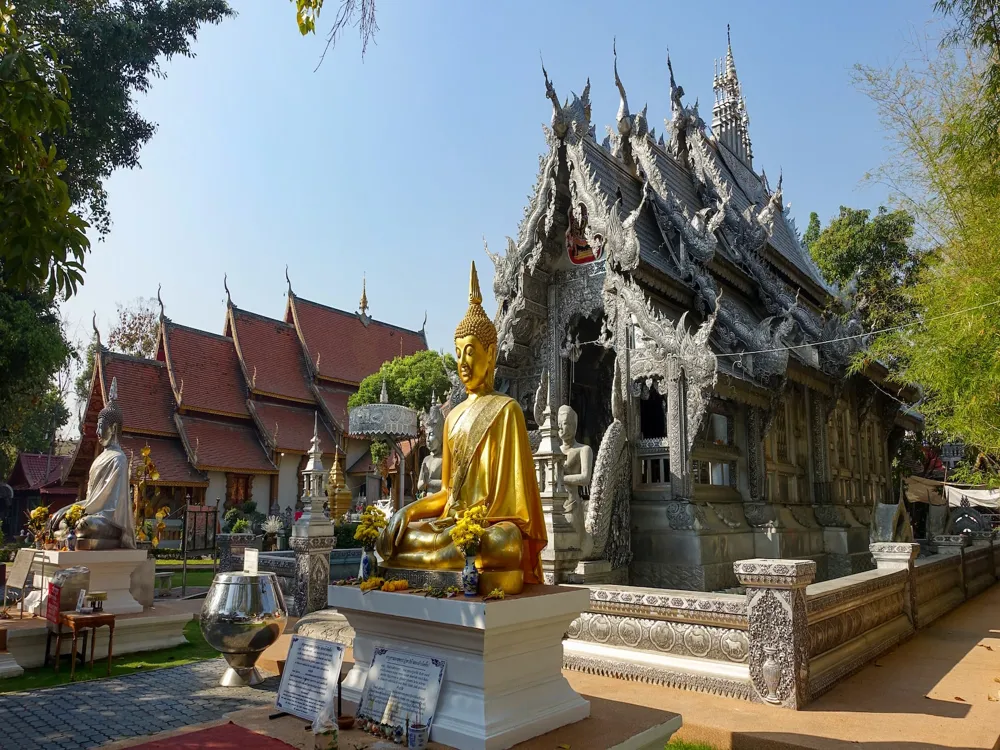Yandabo Village, nestled along the banks of the Ayeyarwady River in Myanmar, is a hidden gem steeped in history and culture. Known for its pivotal role in the signing of the Treaty of Yandabo, which ended the First Anglo-Burmese War in 1826, the village today is a serene haven that captivates visitors with its timeless charm. The villagers, primarily engaged in pottery-making, live a life deeply connected with the river and the earth, creating exquisite earthenware that is renowned throughout the region. As you wander through the narrow lanes of Yandabo, the air is filled with the earthy aroma of clay and the gentle rhythm of the potters' wheels. The architecture of the village is a testament to its rich history, with traditional houses made of bamboo and wood, adorned with intricate carvings and thatched roofs. These homes are not just dwellings; they are a canvas where generations of families have etched their stories. Every corner of Yandabo offers a glimpse into the soul of rural Myanmar, from the bustling pottery markets to the tranquil pagodas that dot the landscape. The architecture of Yandabo Village is a beautiful blend of traditional Burmese and colonial influences. At the heart of the village, the ancient stupas and pagodas stand as silent witnesses to the passage of time, their golden spires gleaming in the sunlight. These religious structures, some dating back several centuries, are intricately decorated with carvings depicting scenes from Buddhist mythology, reflecting the deep spiritual roots of the community. The residential buildings in Yandabo are a mix of old and new, where traditional Burmese houses coexist harmoniously with more modern structures. The older homes, built on stilts, feature spacious verandas and are constructed primarily from locally sourced materials like bamboo, wood, and thatch. These materials not only provide natural insulation but also lend the houses their unique aesthetic, seamlessly blending with the surrounding landscape. The ideal time to visit Yandabo Village is between November and February when the weather is cooler and more comfortable for exploring. During these months, the river is also at its most navigable, making boat trips a delightful experience. When visiting Yandabo, it's important to dress modestly and respect the local customs. Removing shoes before entering homes and religious sites is a must. Engaging with the locals respectfully and with an open heart enriches the experience. A visit to Yandabo is incomplete without witnessing the pottery-making process. Visitors are encouraged to interact with the artisans, and if possible, try their hand at pottery-making, offering a unique insight into this traditional craft. Yandabo Village is accessible primarily by river. The most scenic route is by taking a boat from Bagan, which offers a spectacular view of the Ayeyarwady River and its surroundings. Alternatively, visitors can reach the village via road from Mandalay, which takes approximately 4 hours. Read More:Overview of Yandabo Village
Architecture of Yandabo Village
Tips When Visiting Yandabo Village
Best Time to Visit
Respecting Local Customs
Exploring Pottery Making
How To Reach Yandabo Village
Yandabo Village
Bagan
NaN onwards
View bagan Packages
Bagan Travel Packages
View All Packages For Bagan
Top Hotel Collections for Bagan

Private Pool

Luxury Hotels

5-Star Hotels

Pet Friendly
Top Hotels Near Bagan
Other Top Ranking Places In Bagan
View All Places To Visit In bagan
View bagan Packages
Bagan Travel Packages
View All Packages For Bagan
Top Hotel Collections for Bagan

Private Pool

Luxury Hotels

5-Star Hotels

Pet Friendly






















